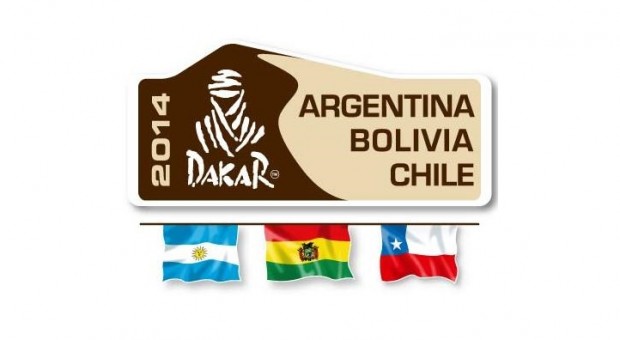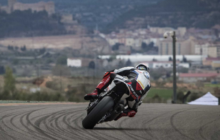
Dakar Rally 2014 – Calendar and Route
The Dakar Rally is an annual off-road race. Part of the Dakar Series, it is organised by the Amaury Sport Organisation. Most events since the inception in 1978 were from Paris, France, to Dakar, Senegal, but due to security threats in Mauritania, which led to the cancellation of the 2008 rally, the 2009 Dakar Rally was run in South America (Argentina and Chile). It has been held in South America each year since 2009. The race is open to amateur and professional entries, amateurs typically making up about eighty percent of the participants.
Despite its ‘rally’ name, it is an off-road endurance race, properly called a ‘rally raid’ rather than a conventional rally. The terrain that the competitors traverse is much tougher and the vehicles used are true off-road vehicles rather than the modified on-road vehicles used in rallies. Most of the competitive special sections are off-road, crossing dunes, mud, camel grass, rocks and erg among others. The distances of each stage covered vary from short distances up to 800–900 kilometres (500–560 mi) per day.
their riders to pace themselves and take good care of their vehicles. This is the essence of off-road races.”
Sunday 5th January
Stage 1: Rosario – San Luis
•Liaison sections: 629 km
•Special stage: 180 km
Establishing their position
The competitors will wake up early to set off along the road in the region of Cordoba and start the race on some narrow tracks which will require the utmost vigilance. Each one will still be very fresh allowing them to tackle the stony sections or the blind jumps serenely. The competitors’ driving skills will be rewarded at the finish, where they will have already clocked up 800 kilometres. Although the gaps will not be significant at this stage of the race, it is nevertheless important to maintain their position in the part of the standings that they are aiming for!
Monday 6th January
Stage 2: San Luis – San Rafael
Motorcycles – Quads
•Liaison sections: 365 km
•Special stage: 359 km
Cars
•Liaison sections: 365 km
•Special stage: 433 km
Trucks
•Liaison sections: 365 km
•Special stage: 400 km
Grey dunes go hand in hand with surprises!
The fastest special stage of the rally, at least for its first part, will also be the one where drivers will have to face the first dunes. And it won’t just be a brief encounter with sand: in the last 100 kilometres, the exploration of the grey dunes of Nihuil will be even more intensive than during previous visits. The sand is more firm there, but the experience will provide a great deal of insight about each of the competitors’ technical skills. In short it will be a veritable test.
Tuesday 7th January
Stage 3: San Rafael – San Juan
Motorcycles – Quads
•Liaison sections: 292 km
•Special stage: 373 km
Cars – Trucks
•Liaison sections: 295 km
•Special stage: 301 km
The Aconcagua as a landmark
The competitors of the 2014 Dakar will experience their first taste of the mountains by passing through the Pre-Andes. The Aconcagua Volcano stands 6,962m high and will observe the progress of the vehicles, of which a part will rehearse their high mountain driving techniques. The motorcyclists will climb up 4,300 metres during their special stage, on a ridgeline where they will have the impression of towering over the whole of America! The descent will bring them back to the tough reality of the drivers of the Dakar, as they will only have finished the first part of this marathon stage. They will have to ensure the mechanics for their own vehicles at the isolated bivouac which has been set up for them.
Wednesday 8th January
Stage 4: San Juan – Chilecito
Motorcycles – Quads
•Liaison sections: 210 km
•Special stage: 353 km
Cars – Trucks
•Liaison sections: 211 km
•Special stage: 657 km
Mountains and countryside
The strategy of the motorcyclists will come into play: initially their navigational skills will be seriously tested at the beginning of the morning, and then they will be faced with the problem of worn tyres, as they have already been over-used the day before. As for the drivers of cars, they will have an even more demanding route to tackle in the countryside. The Dakar’s competitors haven’t faced a special stage this long since the historical one from Zouerat to Tichit in 2005! They will have to cross rivers, descend the canyons in a Wild West setting and beware of the other participants: as these terrains are often wide open, it will be entirely possible to overtake fellow competitors.
Thursday 9th January
Stage 5: Chilecito – Tucuman
•Liaison sections: 384 km
•Special stage: 527 km
A sleepless night in Tucuman!
After two race days with completely separate routes, everyone will gather together to tackle the longest stage of the rally. They will need to be extremely resistant to overcome these two sections of the special stage which will primarily feature sand. All day long the competitors will make headway on off-piste sections: those who have poorly assessed the limits of their engine will constantly be on the verge of overheating and all the more so, as the region’s temperatures are generally very high. At the bivouac in Tucuman, the candidates for the podium will have been whittled down to a select few, as many of them will no longer be a part of this elite group. For many others, their timing and mechanical mishaps will only become apparent in the middle of the night.
Friday 10th January
Stage 6: Tucuman – Salta
Motorcycles – Quads
•Liaison sections: 64 km
•Special stage: 400 km
Cars
•Liaison sections: 270 km
•Special stage: 424 km
Trucks
•Liaison sections: 394 km
•Special stage: 156 km
The quest for the best time
Once they have left Tucuman, the cars will head north and drive along part of the renowned Ruta 40, and continue on in the heart of one of Argentina’s most beautiful landscapes. The possibilities to widen the gap will be limited but the most skilled drivers may be able to seize the opportunity of adding a stage to their list of wins. A new trip to the mountains will take motorcyclists to the banks of the rivers. They will have to remain vigilant until the very end of the stage as the region is frequented to a great extent by animals of all sizes. Then they will finally be able to rest.
Saturday 11th January
Rest day: Salta
Reaching the rest day represents a major intermediary goal on the Dakar. Some of the rally’s newcomers, who are conscious of how tough the challenge is, may even regard this as a tiny victory. So the drivers and teams will be welcomed with the honours of a halfway podium at the bivouac in Salta, where a first celebration has been organised for them. Thousands of spectators are expected to come and discover the Dakar Village, as they did in Tucuman last year, where they will have the opportunity to immerse themselves in the world of the rally, take advantage of the great variety of entertainment and activities on offer and meet the race’s key figures. It will also allow the competitors to boost their motivation levels and recharge their batteries.
Sunday 12th January
Stage 7 – Cars-Trucks: Salta – Salta
Cars
•Liaison sections: 230 km
•Special stage: 533 km
Trucks
•Liaison sections: 230 km
•Special stage: 525 km
The all-inclusive loop
This mega loop with a 500-km long special stage on the agenda will test the teams’ ability to adapt to changes of pace. After stony terrains at the beginning of the day, some top speeds will be recorded in the second part of the stage, and then the drivers’ road techniques will be tested, and all of this at an average altitude of almost 3,500m. To end this highly emotional day, they will have to cross a vast salt flat extending over twenty or so kilometres: a straight stretch which will make the competitors’ heads spin.
Sunday 12th January
Stage 7 – Motorcycles-Quads: Salta – Uyuni
•Liaison sections: 373 km
•Special stage: 409 km
Before the salt flat, the maze of tracks
The second marathon stage will begin for the riders of motorcycles and quad bikes, who will be savouring the first visit of the Dakar to Bolivia. When they enter the country the riders will experience a visual shock and will also be perturbed by the maze of tracks through which they will have to navigate. In these steep mountainous areas, the beauty of the setting and the variety of colours will not make the task ahead any easier. The few villages which will be idly crossed will, on the other hand, provide them with perfect waypoints. To reward their diligence, they will be able to head for the bivouac in Uyuni, set up on the edge of the salt flat… at an altitude of 3,600m!
Monday 13th January
Stage 8 – Cars-Trucks : Salta – Calama
•Liaison sections: 510 km
•Special stage: 302 km
Entering Chile
Today the competitors will cross the Andes Cordillera, to begin the Chilean part of the rally. A special transition stage has been marked out there for the last day that cars will progress without overtaking motorcycles and quad bikes. The timed section of the day will be accessible to skilled drivers who are at ease on fast tracks in a closed environment. Drivers are advised to pay attention to their position from the outset to limit the number of overtaking manoeuvres, even though the strict standards regarding the use of the Sentinel system will be carefully monitored at the end of the day.
Monday 13th January
Stage 8 – Motorcycles-Quads: Uyuni – Calama
•Liaison sections: 230 km
•Special stage: 462 km
Uyuni: a vision of white
The Salar de Uyuni is quite simply the biggest salt flat in the world! And the motorcyclists will be able to realise this, since they will have to go right round this gigantic stretch during the eighth stage of the rally. The route will be marked out around and across the salt flat, a marvel stretching over more than 400 kilometres, and will also pass by several islands which make this site so exceptional. The stature of the Tunupa Volcano (5,300m in altitude) will be a permanent feature on the landscape. An amazing daydream vision between heaven and earth on a white backdrop may be apparent, weather permitting!
Tuesday 14th January
Stage 9: Calama – Iquique
•Liaison sections: 29 km
•Special stage: 422 km
A steep drop: thrills guaranteed
The 2014 Dakar will reach its most northern point in Iquique, where the competitors will see the ocean for the first time this year. Above all, the drivers and teams will discover the Atacama Dunes again after a first part of a special stage which will be rather tedious. Dune specialists will be in command over a distance of almost 150km. Thrills will be guaranteed at the very end of the day, on the last three kilometres of the descent to Iquique: there is more than a 30% difference in height from start to finish and it is almost not recommended to break. The law of gravitation takes on its full meaning: the bivouac is not far away!
Wednesday 15th January
Stage 10: Iquique – Antofagasta
•Liaison sections: 58 km
•Special stage: 631 km
It wouldn’t be the Dakar without fesh fesh!
The special stage, split into two sections with very different features, will begin with the descent towards the shores of the Pacific. The advance gained in the stage the day before may will be increased in the sand during the first two hundred kilometres. Even more skill will be required to tackle the sections of fesh-fesh in the second part of the stage. Once this difficult area is behind the drivers, they will all be delighted to twist and wind along the region’s mine tracks, and in particular to be welcomed by the majestic arch of La Portuda, a stone’s throw from the bivouac in Antofagasta.
Thursday 16th January
Stage 11: Antofagasta – El Salvador
•Liaison sections: 144 km
•Special stage: 605 km
The Atacama, in all its splendour
In addition to the distance, here the competitors will be put to the test by all the difficulties offered by the Atacama Desert… and will have to display all the qualities required for off-road races. After the mine tracks and the many rivers to cross, the competitors will have to distinguish themselves in the heart of the Dunes of Copiapo: the fastest motorcyclists are expected to spend seven hours behind the wheel. Needless to say that on this decisive day there will be no shortage of opportunities for competitors to make a winning comeback in the race. This will be the key stage of the 2014 edition.
Friday 17th January
Stage 12: El Salvador – La Serena
•Liaison sections: 349 km
•Special stage: 350 km
Dunes: the last ditch attempt
The site chosen in El Salvador at high altitude towers over the usual location of the bivouac in Copiapo. This position will ensure that the Camanchaca, the morning mist which sometimes hinders the start of the stages, will be avoided. Sand will be featured on the route again, in particular with a big string of dunes to be overcome at the end of the special stage. And if there are dunes, this automatically means that vehicles will be blocked in the sand! Therefore, in the categories where competitors are neck and neck, the leaders may put themselves at risk.
Saturday 18th January
Stage 13: La Serena – Valparaiso
•Liaison sections: 378 km
•Special stage: 157 km
Watch out for the needles
Before admiring the hillsides brought to life by the houses in Valparaiso, the competitors will have to climb the hills planted with cacti during the rally’s last special stage. The pride and joy of crossing the finish line is drawing closer, but the statistics are formal: every year one or several drivers come unstuck during this final exercise so prudence is required! Even this close to the finish, vigilance is the competitors’ best ally to ensure their presence on the final podium.
Source Dakar.





